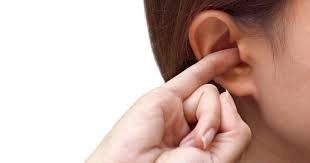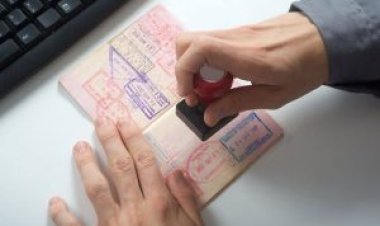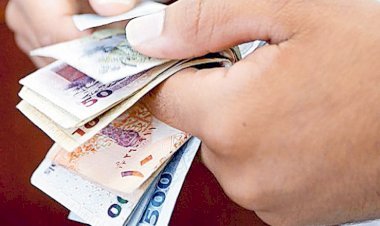To scratch an Itch - to do or not to do!
Neurodermatitis is a skin disorder associated with severe itching and can occur anywhere in the body. A vigorous rub over the skin is enough to traumatize and trigger swelling and further itching. The pain that follows these itching sessions can be excruciating. Medications will be needed to reduce the swelling and the pain. Avoidance of scratching and rubbing is essential for a cure even though it may be very tempting to soothe the itch. Soothing cremes and lotions and oral medicines to reduce itching will further aid the treatment.

Neurodermatitis is a skin disorder associated with severe itching and can occur anywhere in the body. A vigorous rub over the skin is enough to traumatize and trigger swelling and further itching. The pain that follows these itching sessions can be excruciating. Medications will be needed to reduce the swelling and the pain. Avoidance of scratching and rubbing is essential for a cure even though it may be very tempting to soothe the itch. Soothing cremes and lotions and oral medicines to reduce itching will further aid the treatment.
Allergy and fungal infections are also associated with itching. The former is usually associated with allergic manifestations all over the body. The latter is more common in humid climates or swimmers. Some people have the habit of washing their ear canals with soap and water while bathing. The ear canal being tortuous prevents this water from draining. Moisture in the ear tends to favour the growth of fungi and bacteria. Attempts to dry with a towel can be traumatic and leads to itching. Nature has its mechanism to keep the ears clean. It is not required to wash or clean the ear canals at all. Fungal infections must be treated appropriately by the doctor with appropriate antifungals.
A lot of people around me, including some fellow doctors, indulge in the habit of scratching their ears. There is a transient pleasant sensation due to the stimulation of the nerves in the skin of the ear canal. Itching the ear is habit-forming and almost addictive for some people. This skin is very delicate and easily injured by the scratching. Injury to the protective skin barrier lets in infection, further worsening the itch. Understanding this vicious cycle will help to break the habit. If the itch is intolerable, it is better to get the help of an otorhinologist, rather than giving in to the temptation. Appropriate soothing agents help temporarily, but the problem tends to recur if the habit is not corrected. An itch for an itch is no solution. Even the best doctor is rendered helpless by this lack of self-discipline.
Earbuds or Q tips, as the commercially available cotton swab sticks are called, is a misnomer. These are not suitable for use in the ear as they are usually quite stout and tend to push the debris deeper into the ear canal. Children usually tend to copy adults and the easy availability of earbuds at home, encourages the habit in them too. Many patients wonder as to how it was alright for a doctor to use a swab- stick to clean a patient’s ear, while the same was forbidden for them. E.N.T. doctors are trained to do so safely and are also armed with the knowledge of anatomy to avoid any damage to the structures in the ear. Moreover, the swab stick that the doctor uses is usually custom made for the purpose, slender and flexible. The otorhinologist is also supported by good lighting and magnification to aid visibility as with a microscope. Surely, this is not the same as self- cleaning!
The never-ending list of things that are used to itch the ear include fingers, pins, feathers, matchsticks, earpicks etc. The earpick is a small, spoon-shaped metallic device, used traditionally to clean the ear canal. However, it is an inherently dangerous piece of equipment and should never be used in the ear canal. A fellow doctor had even attached a metallic ear- pick to his key chain, just to scratch his ear at will. He presented with excruciating earache on several occasions but could not be convinced to change his habit. Finally, the damage to his ear canal was so severe that it could be demonstrated on a CT scan. Only then did he decide to change his habit and of course, his keychain!
Itching in the nose results in the habit of picking the nose. This is, I could say, almost universal and of course gross. Children usually admit to it truthfully and can then be easily trained to break the habit. Adults more often deny it and for them, accepting the problem is the halfway mark to cure. The common excuse is that they were only indulging in a gentle cleansing of the nostrils! Frankly, the nose needs no cleaning. Crusting in the nose is usually the result of the injury to the delicate skin caused by the cleaning. Wounds heal by scab formation and the removal of these scabs, lead to the refreshing of the wound. This vicious cycle in the nose is the most common cause of bleeding from the nose. If left alone for a week or so, the crusts fall off with healing. If the crusts are persistent and irritating, medical attention should be sought. Another downside of the nose-picking is the possibility of infections by the microorganisms on infected hands. These infections may, in turn, be a cause for bleeding too.
The habit of itching is best avoided, especially, in these COVID times.
Read in Malayalam : http://newsmalayali.com/scratch-an-itch-to-do-or-not-to-do
Courtesy: Article Published in Newsletter of Ernakuam ICAI
Author : Dr. Reena is currently the Head of the Department of ENT at Lisie Hospital Ernakulam. She was born and brought up in the Steel City of Rourkela and is an alumnus of VIMSAR Medical College Odisha. She had a short stint as HoD of ENT at LF Hospital Angamaly before joining Lisie Hospital a quarter century back.
What's Your Reaction?










































































